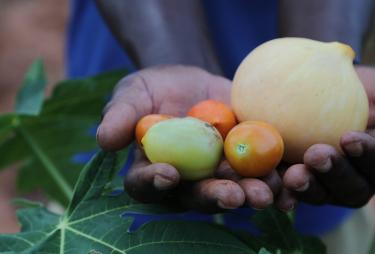Core support shall facilitate cooperation in aid


In recent years, Sida has challenged us strategic partner organisations to work more with a new form of support called Core Support. During the spring, we at the SMC’s office together with our member organisations ADRA and Lepramissionen have carried out a pilot project to test how operations with core support can be planned and implemented by their local partners.
We asked our capacity development advisor, Erik Bäckelid, to tell us more about what core support really is and what will happen when the pilot project ends.
Core support makes partners more independent
Core support is a relatively new form of support for our network. We already work primarily with project or program support. Core support works differently because it contributes to a partner’s entire strategic plan instead of to individual activities. The idea is that it will make it easier for them to manage their activities according to their own priorities and that it will be easier for them to finance parts of the business that are often difficult to finance. For example, administrative and internal capacity building costs. When the partner has more opportunities to work according to their own plan, the impact that donors’ (for example Sida or SMC) own agendas can have on the business decreases. Core support also makes it possible to reduce the administrative burden on donors when reporting on the basis of the partner’s own strategy and budget, instead of a separate reporting to each donor.
Pilot project paves the way for conversion to core support
The first to submit an application for core support is ADRA Uganda and the Leprosy Mission in India. During the spring, we held joint meetings with them and their counterparts among our member organisations. The aim has been to learn together and plan for the application. The meetings have been important in identifying the issues that arise with a new form of support. It has also helped us at the SMC’s office to change and clarify instructions so that we have good routines going forward. One challenge that we have come to a conclusion with is how we can promote cooperation with broad movements such as church communities or humanitarian actors whose entire activities cannot be covered by core support.
The pilot project has also been important to ensure that SMC can meet Sida’s conditions for the grant and that the form of support actually fulfils the purpose of more efficient work processes and a strengthened mandate for our partners. Now ADRA and Lepramissionen have submitted their applications and decisions will be made by the Development Committee at the beginning of the autumn. After that, the SMC makes a comprehensive application for 2022 to Sida.
Do you also want to get started with core support for your local partners?
Those member organisations that are interested in knowing more about core support will be invited to talks by us at the chancellery during the autumn to take a closer look at the lessons learned from the pilot initiative. We hope that these talks will give a clearer picture of how the application and implementation work is done.
So keep an eye out for more information and feel free to contact your administrator at the Swedish Mission Council if you, together with your partner, want to start the process of switching to core support.
